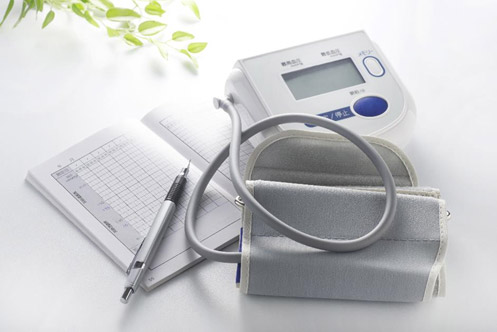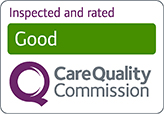What is Ambulatory Blood Pressure Monitoring?
 Ambulatory Blood Pressure Monitoring (ABPM) is when your blood pressure is measured as you move around, living your normal daily life. It is measured for up to 24 hours. A small digital blood pressure monitor is attached to a belt around your waist and connected to a cuff around your upper arm. It is small enough not to affect your normal daily life and you can even sleep with it on.
Ambulatory Blood Pressure Monitoring (ABPM) is when your blood pressure is measured as you move around, living your normal daily life. It is measured for up to 24 hours. A small digital blood pressure monitor is attached to a belt around your waist and connected to a cuff around your upper arm. It is small enough not to affect your normal daily life and you can even sleep with it on.
What are the benefits?
By measuring your blood pressure at regular intervals up to 24 hours, your doctor is able to get a clear idea of how your blood pressure changes throughout the day. Also, because you are able to carry on with your normal routine, it avoids the problems of ‘white coat’ syndrome (where your blood pressure rises because you are feeling anxious about being tested by your doctor or nurse).
Why do I need this investigation?
There are a number of reasons why we might need this:
- To establish a diagnosis of high blood pressure (hypertension)
- To identify patients who have higher blood pressure readings when in the clinic
- (known as ‘white coat effect’)
- To help decide if blood pressure medication is required
- To help to decide whether any change to your medication is required
- To further investigate people whose blood pressure is hard to control
- To see how well a patient’s blood pressure medicines are controlling blood pressure throughout the day
- To see what happens to a patient’s blood pressure at night
How is it performed?
This type of blood pressure measurement is similar to your usual blood pressure measurement: an electronic monitor takes your blood pressure by inflating a cuff around your upper arm and then slowly releasing the pressure. This service will run in each Network at a preferred location- which will generally be one of the local practices.
The monitor will be started by a qualified Health Professional [HCA/Nurse]. It will be placed inside a protective cover and it is important that it remains in this for the duration of the monitoring. The machine then takes blood pressure readings at regular intervals throughout the day. Normally this is around every 15-30 minutes during the daytime and 30-60 minutes at night but may vary between different clinics.
If asked, you will need to keep the monitor on throughout the night; many people put the machine under the pillow or on the bed while they sleep. At the end of the monitoring period you can remove the machine and cuff and give it back to the hospital or surgery. The machine will have stored all your readings and these will then be analysed.
What do I need to do?
To allow the machine to work properly, it is important to make sure that the tube to the machine is not twisted or bent. Also, just before the machine is about to take a reading, it will alert you. When this happens you should:
- sit down, if possible
- keep the cuff at the same level as your heart
- keep your arm still
- do not talk or cross your legs during the recording
It is recommended that you do not drive for the duration of your monitoring.
Your clinician may ask you to keep a diary whilst wearing the monitor; what time you went bed and got up and if and when you took medications. Some people find 24-hour testing distracting and uncomfortable. Your clinician should advise you of what to do in this case when they fit the monitor.
Do I need to do anything different because I’m being tested?
No. Because the test is being carried out to find out what your normal daily blood pressure is, it is important to carry on with your normal routine and do all the things you would normally do. However, you should avoid vigorous exercise.
What clothes should I wear for the appointment?
You should wear loose clothing, preferably a short sleeved top. The monitor will be fitted underneath your top. You should also wear a belt to which the monitor can be attached
Do I have to sleep with the monitor on?
Yes, if requested by the doctor or nurse it is important that you keep the monitor on during the night. This will help us understand what your blood pressure is doing whilst you are sleeping.
May I take a bath/shower whilst undergoing monitoring?
Preferably avoid showering or bathing during the period of measurement. If you decide to take a bath or a shower you will need to take off the monitor and cuff as these are not waterproof and you must not get them wet. You need to make sure when reapplying the cuff that it is in the same position as when originally fitted. If you are unsure then ask your nurse for advice.
May I exercise with the monitor on?
We advise patients to avoid going to the gym/ exercising whilst the monitor is attached. A gentle or brisk walk is fine.
Will I need to keep a diary whilst having the monitoring done?
When we analyse the results, we rely on the information you provide in your diary. Sometimes there may be perfectly good reasons as to why your blood pressure was high, for example, when running for a bus. Each time your blood pressure is recorded, you may be asked to make a note of the time and your activity (walking, sitting, smoking etc). You do not need to do this at night, but you must remember to complete the section on the diary which records when you went to sleep and woke up.
Should I document when I take all my medications?
You may be advised of this by the nurse/ health professional at your appointment. Document the name and dose of the drug and the time it was taken. Also record any symptoms felt during the monitoring (pain, dizziness etc).
Where can I find out more?
British Heart Foundation -https://www.bhf.org.uk/search/all?keyword=Ambulatory+Blood+pressure+monitoring
.png)

